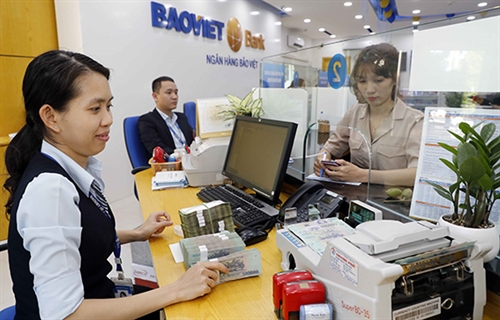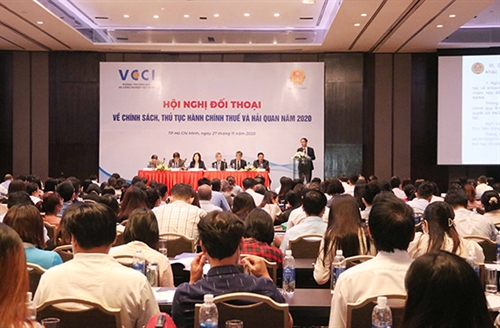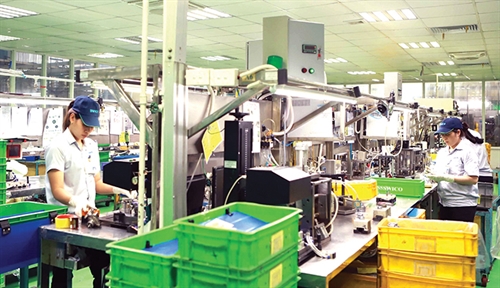Ngan Tran
Director-Maygust Trademark Attorneys
Canberra, Australia
The ST25 sign lodged for trademark protection by a number of companies in the USA and Australia has been discussed recently. While the National Office of Intellectual Property of Vietnam affirmed that ST25 is a common name for rice, it cannot be protected as a trademark. What should business owners pay attention to select a trademark which meets the requirements under the Law of Intellectual Property (IP) of Vietnam and other countries?
Trademark is a sign
According to the provisions of IP Law in Vietnam, a trademark is a sign used to distinguish goods and services of different organizations or individuals. Thus, a trademark is any word (a sign of word), or image (a sign of figure) or a combination thereof, represented by one or more colors together. As shown in Figure 1, either word, figure or a combination of word and figure can be used as a trademark.
 |
 |
For a sign to be protected as a mark, it must be distinctive and be distinctive from other signs
A trademark must be distinctive as it addresses a trademark’s capacity for distinguishing particular goods/services of one producer or source of trade from the others. So, the signs such as commonly-used descriptive terms, phrases or images or signs indicating time, place, production method, quantity, quality of the goods/services; or listed in the prohibited signs such as a sign that is identical or confusingly similar to the image of national flags and emblems of countries, abbreviated names, full names of state agencies etc., will be difficult to be registered as trademarks.
For choosing a distinctive mark, business owners can refer to the “Spectrum of Distinctiveness (Figure 2).” This concept divides the distinctiveness of trademarks into five categories. Note that this article only focuses on trademarks that are words.
 |
 |
Firstly, fanciful marks are made up words and have no meaning, for example, Huda for beer, G7 for coffee or Kodak for camera (Figure 1) etc. As they are the made words, they are unlikely to be the same or similar to someone else’s trademarks. However, it is difficult for customers to remember without long-lasting and robust communication between customers and products/services. The marks in this category are inherently distinctive.
Secondly, arbitrary marks are meaning words in common usage that have no description of the products/services being sold. The examples for arbitrary marks are “Trung Nguyen” for coffee or “Kinh Do” for confectionery. Arbitrary marks are also strong and inherently distinctive.
Thirdly, suggestive marks suggest a quality or characteristic of the products/services but do not directly describe the goods/services. Typically, it will require the imagination or a multi-step reasoning process to understand the nature of those marks. Examples include “Vinamilk” for milk or “Airbus” for aviation.
Descriptive marks directly describe the nature, purpose, characteristic, or attribute of the goods/services; therefore, not eligible for trademark protection unless secondary meaning has been established in the customer’s minds through usage. However, the scope of trademark protection is also narrow. Examples include “soft” for soap or “sweet” for candy.
Lastly, generic marks are simply the common name for goods/services being sold. Examples could be “Aspirin” for the analgesic, “Good Coffee” for coffee, or “ST25” for rice which merely denotes the goods. A generic mark is not eligible for trademark registration.
Apart from the distinctiveness, the mark also needs to be able to distinguish it from others. Therefore, after selecting a set of trademarks, business owners need to conduct a search in the national trademark databases that they want to apply to check for the possibility of overlapping or confusing with other trademarks. In Vietnam, business owners can access this database at the Industrial Property Digital Library of National Office of IP Vietnam at https://iplib.noip.gov.vn/WebUI/WSearch.php.
In addition, business owners also need to search the possible signs to be a trademark to minimize the conflict of rights with other intellectual property objects such as tradename, industrial designs, geographical indications or well-known or widely recognized trademarks, etc. In particular, depending on the financial ability or the perception, business owners can conduct the search and apply for trademark registration by themselves or hire licensed companies in Vietnam or other countries to carry out the trademark registration.
Thus, a typical trademark selection process will normally go through the following basic steps: (1) gathering information and ideas (features of goods/services of the business, customers and competitors …) to come up with a list of possible trademarks; (2) design possible trademarks, evaluate and prioritize the designs; (3) conduct searches to determine whether any other parties have the identical or similar marks which have been protected; (4) finally register your trademarks.
In conclusion, it is not too complicated to select a strong trademark in Vietnam or in other countries if business owners seriously invest in early-stage startups. By doing so, business owners could gain cost-saving strategies for a long run of their business.-
* (This article is originally published in Vietnamese by Thoi Bao Kinh Te Sai Gon).









